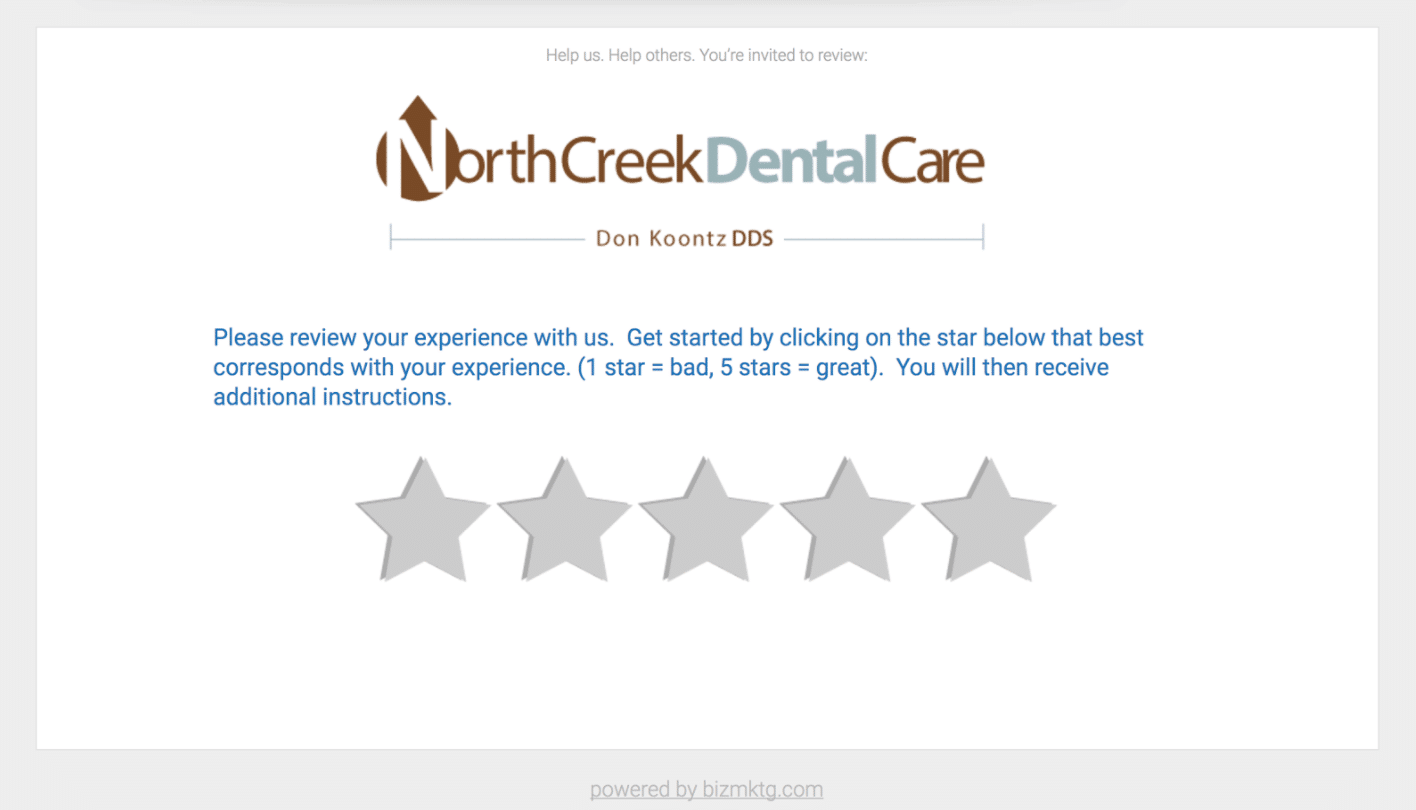The test results are back, and the diagnosis is in. Doctors hate reviews.
- 75% of doctors say reviews stress them out.
- 33% of doctors say they believe reviews actively cause patients harm.
- 34% of doctors say reviews could lead to healthcare overutilization.
- Meanwhile, 82% of patients continue to consult third-party review sites before making decisions about their health care.
Unlike most other industries reviews aren't the sole factor driving healthcare decisions, but in truth the other factors hurt more than they help. Indeed, reviews may be the only way to mitigate some of the circumstances which can jeopardize both new patient acquisition and the lifetime loyalty of a patient.
And since most patients prefer third-party online reviews over government rankings or reviews posted on the practice website, they are not going away anytime soon. It doesn't matter if you're running a hospital, hospice, clinic, or local doctor's office. Reviews will continue impacting your business well into the foreseeable future.
Thus, if you're responsible for marketing any healthcare practice you're going to have to figure out how to account for them sooner rather than later.
You can't rely solely on your hospital or clinic's internal review system. Here's why.
Many healthcare companies have attempted to take control of the review process by creating their own review system. They run surveys and then post the results of these surveys, along with some patient comments, on their websites.

This method of review control may have its place, but you can't solve the entire problem of reviews this way. Even if you believe third party review sites are unfair, even if you use a survey and take the time to show patients how it works, patients will perceive the existence of a positive bias.
Patients are probably correct. Studies show a hospital's own review page often display more favorable results for doctors than third party sites.

Same doctor, third party site. Score drops from 4.9 to 4.2.
How significant is the difference? Sometimes it's only a few percentage points, but those percentage points still matter. Would you rather go to a doctor with a score of 4.9 stars or a doctor with a score of 4.2 stars?
Even if you account for disparities in the number of reviews collected (in the example above the hospital has collected far more reviews than the third-party site has) the perception of bias continues to linger. It will get worse if your hospital seems to report every available physician has nearly 5 stars.
Dropping a few poor reviews here or there can make a huge difference in the way these scores are generated. All a hospital has to do to keep ratings high is to throw out some percentage of the 1 and 2-star reviews to ensure the results skew positive. It may even seem ethical when the reviews in question seem unfair or spurious.
I can hear the objections already. Sometimes reviews really are unfair or spurious, and third-party sites can be downright tyrannical about getting them removed.

C'mon. Do we really have to display the opinion of the dying dog guy?
There are solutions for this problem, which I'll share in a moment. For now it's enough to note for better or worse, customer perception is going to be the deciding factor in whether they book the appointment. Keep reviews on your website all you want, just don't expect them to save you from having to engage with all the other sites out there.
Attracting patients...and keeping them.
Getting patients is hard. Earning their loyalty is harder.
And while customer attraction and retention are common problems for every industry, healthcare providers face special challenges.
- Insurance companies can have an undue influence on where a customer chooses to get care.
- Patients are often so terrified by skyrocketing medical costs and insurance denials they fail to pursue services, even if they really need them.
- Healthcare providers have to bring in far more people than other industries, because a healthcare company is in the unique position of never knowing whether any payment will be received for services rendered.
- It’s harder for healthcare companies to get reviews, which means one bad review can unfairly skew star ratings and customer perceptions.
- Bad reviews are more likely, because patients are more likely to leave a review for a doctor or a hospital only if the experience was “extreme,” either extremely positive or extremely negative.
Increasing the number of happy patients who are investing in the review writing process can help mitigate some of these issues in the following ways:
- Even the simple act of writing a positive review can help build loyalty to your facility and the doctors in it, helping to reinforce what patients enjoyed about the experience.
- More reviews means better SEO results, more patient trust, and an increased likelihood patients will choose to book an appointment.
- Gently encouraging happy patients to leave a review can provide reviews generated by perfectly normal transactions, rather than extreme ones, providing prospective patients with a clearer picture.
- Increasing the number of reviews you receive means bad reviews have far less of an impact.
Of course, reaping these benefits won't happen unless you lose your suspicion of reviews and start making concrete changes to the way your practice approaches patient feedback.
Need reviews for your practice?
Believe it or not, doctors and healthcare services need online reviews. Potential future patients are actually evaluating your practice based on your review portfolio.
That's where Grade.us comes in.
Create your review funnel today for free and start giving your happy patients a voice!
Change your mindset, save your practice.
Irritation over the need to generate positive reviews is highly counterproductive. Even if you're one of those doctors who thinks reviews will cause patients to try to use healthcare services too much.
Instead, adopt a fresh mindset about all the benefits of reviews. In addition to the ones mentioned above, more reviews means more patients, which means more profit.
And here's the secret. If you can change just one tiny reality about how reviews interact with your practice, reviews will typically end up being more positive than negative, assuming you're running a good, solid practice and treat patients right. (You do, don't you?)
Now consider you'll get a review for the asking about 70% of the time, if you make a personal ask. And if you have to ask patients to leave a review, they're happy enough to leave a good one. Besides, you wouldn't make the ask of someone who is clearly unhappy.
Which means if you can change your mindset, get pumped about reviews, and begin integrating the request for a review into your practice's culture, then you can take control of the entire process in a positive way.
Your practice can score reviews—this isn't exactly a triple bypass.
Reviews for the asking? But who should make the ask? You've got a couple of options.
- If the patient has a good relationship with the doctor and the nature of the visit makes it appropriate, the doctor can always ask at the end of an appointment.
- The nurse who took the vitals, offers up the doctor’s instructions, and probably spent as much time, if not more time, with the patient than the doctor did could also make the ask at the end of the appointment.
- The receptionist can make the ask as the follow-up appointment is being made, or as the patient is checking out.
Choose one person who is going to handle the task. You want someone who can make the ask in an easygoing, natural way. You also want someone who is good at reading the room, and who knows when it's better not to make the ask.
Of course, asking isn't always going to do the trick, and sometimes it's just flat out inappropriate to do it on-site. Fortunately, you've got some other tools you can use.
- Think about placing a “Review Us” sign somewhere in your office. You’ve got loads of options.
- If you’ve won any review-based awards, such as the “Locals Love Us” award, be sure to display the appropriate sign.
- If you have an electronic “patient portal” which gives patients access to follow-up information, refill requests, messages to doctors and other functions you can include a quick request for feedback in an automated email which reminds patients to check their portal a day or so after the visit is complete.
- Consider adding a review reminder to the back of an appointment reminder card.
Reduce stress by taking control of your healthcare industry review management process.
What if your third-party reviews looked as awesome as they do on your company website?
You can make this happen. As mentioned, getting even a few negative reviews off the table can make a huge difference.

With the review funnel, you can steer happy patients to your preferred review site listings and unhappy patients to a contact form instead, one where they can air out their grievances without harming your practice's reputation.
Simply have your receptionist invite patients to receive a three email review request drip campaign, or have patients go through the review funnel in the waiting room on a tablet, then have the positive feedback emailed to them so they can post it on one of your preferred 3rd-party review sites. That way your practice won't be penalized for having too many reviews coming from the same IP address.
You get the chance to make it right with unhappy patients, building their loyalty in the future, and the dirty laundry remains unaired.
Want to get a sense of what this looks like? Check out how one marketing agency helped North Creek Dental take control of their review process, or take a look at this Grene Vision Group case study.
You may not realize it, but you can even take some control of the content of the reviews you receive.
I don't mean you're going to fake reviews, or write reviews for your patients. Rather, you're going to take advantage of the fact that people are often happy to have a little guidance about what to write.
And if you're going to request feedback in an email, you can briefly hit on those touch points.
But first you need to know what a valuable healthcare review might look like.
To figure it out, let's start with the 5 things patients are trying to ascertain when they read reviews. These are "hot buttons," if you will, for patients, the things they either get happy about or unhappy about when they visit a healthcare provider.
1. Are the doctor and staff compassionate, kind, and respectful? Was everyone in the office pleasant and professional?
2. Does this facility respect my time? If I've got an emergency, how long can I expect to wait before I'm seen? If I've got an appointment, will I be seen on time?
3. Will the doctor and the staff really take the time to figure out what's going on with me? Or will the physician breeze in and out after a cursory 3 minutes without stopping to listen to my questions and concerns?
4. Is the medical staff at this facility competent? Will I receive safe care? Will my issue be treated, to the extent allowed by medical science and my own insurance company?
5. Will there be any problems or surprises with the billing process? Will this facility accurately help me process my claim so I pay as little as possible out-of-pocket?
Here's an example of a really solid review.

This review hits most of the hot buttons:
- Everyone was friendly.
- The patient spent the typical amount of time at the office, both in terms of wait time and visit time.
- The doctor listened well, and knew what she was talking about.
Here's another one:

This one's from RateMDs.com. Notice how this site even asks patients to rate each aspect of their experience, and note how they correspond to four out of the five hot buttons above.
Note:
You’re almost never going to see a positive review talking about billing issues. If there’s no problem, patients probably won’t talk about it, especially since they won’t even see the final bill until about thirty days after the visit.To get these awesome reviews, you need to gently nudge patients in the direction of thinking about these things. It's harder to do this on an in-person ask, and you can't do it at all with printed materials.
But you can slip a little hint into the follow-up email.
An example follow-up email:
Hi, [patient name]!
Just letting you know all the follow-up information from your visit today is ready for you in [Name of Patient Portal]. This will include post-visit instructions, information on your prescriptions, communications from your doctor, and an easy, convenient way to schedule additional appointments should you need them.
If you've never done so before and found your care to be thorough, warm, and prompt today, please consider clicking here to leave our practice a review. It really helps us out, and we actively use your feedback to make our practice better.
It's subtle, but notice how this example gets patients thinking in the right direction by hitting on some of those points:
- “Thorough” hits on whether the doctor spent enough time with the patient.
- “Warm” touches on whether the doctor and staff were compassionate, professional, and kind.
- “Prompt” touches on the issue of wait time.
Why are we only hitting three out of the five hot buttons here?
Because patients have no framework to evaluate how competent their care was a few hours of their visit, and asking them whether they thought the doctor knew what he or she was talking about is a good way to get them questioning whether the doctor does!
And, of course, the last thing you want to do is redirect the patient's attention to the billing process.
Patients are happiest with the billing process when it's largely invisible.
Why the bit about the patient portal first?
Frankly, because healthcare isn't like any other service. It deals with some highly sensitive personal issues, pains, and fears. Thus, simply launching right into "hey, leave us a review" would be inappropriate and jarring.
Offering something of use which helps patients manage their help as the primary reason for the email helps to ease and smooth this transition.
For best results, start directing the flow of reviews to the third-party sites currently delivering the most value to health professionals.
There are lots of places customers might leave reviews, but the sites with the most value are listed below.
- Google My Business
- WebMD
- Healthgrades
- RateMDs
- Vitals
You can direct the flow of reviews by suggesting any of these sites when you make your ask. You can also build them into response forms and automated emails so you get a nice rotation going between all of them.
Take this feedback, and call me in the morning
As vital as reviews are as a marketing tool, don't overlook their other function. They can help you improve your healthcare facility.
Read reviews carefully to see where your practice may be failing to deliver the high-quality of care you want to offer. If you find common themes in the complaints, find ways to address them. If you see what you're doing right, do more of it.
By doing this, you can fine-tune your service until you've created the best practice you can possibly create. And when you do that? You can't help but win.
Need reviews for your practice?
Believe it or not, doctors and healthcare services need online reviews. Potential future patients are actually evaluating your practice based on your review portfolio.
That's where Grade.us comes in.
Create your review funnel today for free and start giving your happy patients a voice!
About the Author
Raney C. Hudson
Raney C. Hudson is an independent content consultant with a 10+ year track record in the digital marketing industry.










